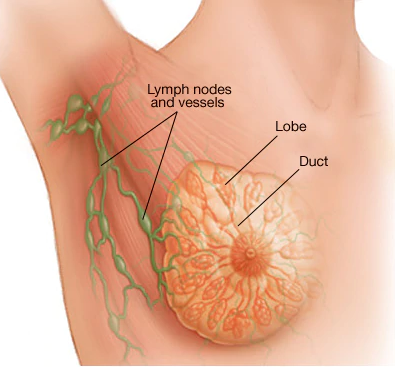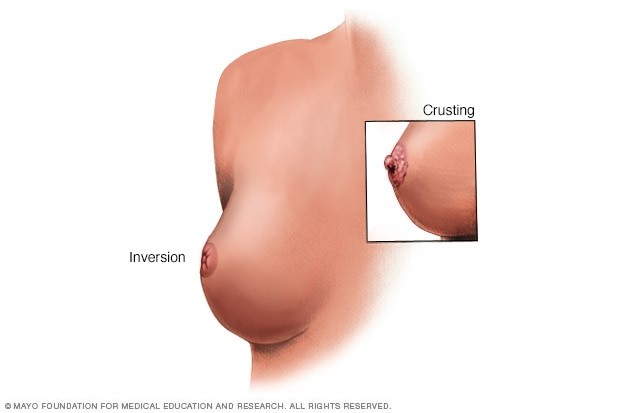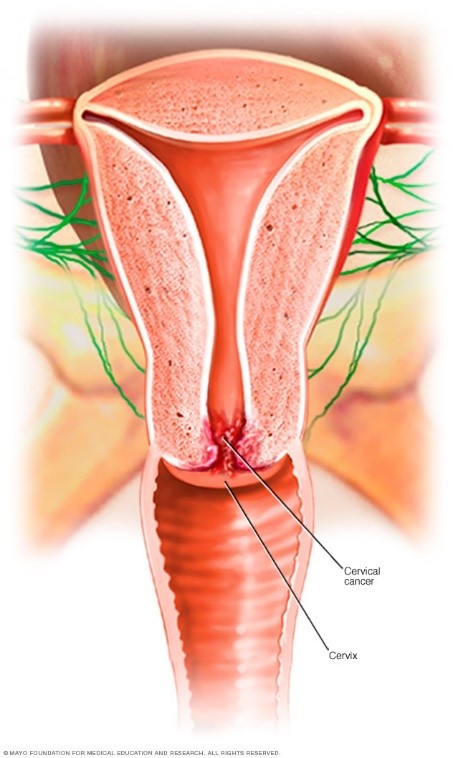Cancer Prevention
CANCER PREVENTION

Breast cancer is cancer that forms in the cells of the breasts. After skin cancer, breast cancer is the most common cancer diagnosed in women in the United States. Breast cancer can occur in both men and women, but it’s far more common in women.
Substantial support for breast cancer awareness and research funding has helped created advances in the diagnosis and treatment of breast cancer. Breast cancer survival rates have increased, and the number of deaths associated with this disease is steadily declining, largely due to factors such as earlier detection, a new personalized approach to treatment and a better understanding of the disease.
What are signs and symptoms of Breast Cancer?
The first symptoms of breast cancer usually appear as an area of thickened tissue in the breast or a lump in the breast or an armpit. Signs and symptoms of breast cancer may include:
- A breast lump or thickening that feels different from the surrounding tissue
- Change in the size, shape or appearance of a breast
- Changes to the skin over the breast, such as dimpling
- A newly inverted nipple
- Peeling, scaling, crusting or flaking of the pigmented area of skin surrounding the nipple (areola) or breast skin
- Redness or pitting of the skin over your breast, like the skin of an orange

What are the stages of Breast Cancer?
A doctor stages cancer according to the size of the tumor and whether it has spread to lymph nodes or other parts of the body.
There are different ways of staging breast cancer. One way is from stage 0–4, with subdivided categories at each numbered stage. Descriptions of the four main stages are listed below, though the specific sub stage of a cancer may also depend on other specific characteristics of the tumour, such as HER2 receptor status.
- Stage 0: Known as ductal carcinoma in situ (DCIS), the cells are limited to within the ducts and have not invaded surrounding tissues.
- Stage 1: At this stage, the tumour measures up to 2 centimetres (cm) across. It has not affected any lymph nodes, or there are small groups of cancer cells in the lymph nodes.
- Stage 2: The tumor is 2 cm across, and it has started to spread to nearby nodes, or is 2–5 cm across and has not spread to the lymph nodes.
- Stage 3: The tumor is up to 5 cm across, and it has spread to several lymph nodes or the tumor is larger than 5 cm and has spread to a few lymph nodes.
- Stage 4: The cancer has spread to distant organs, most often the bones, liver, brain, or lungs.
What is Cervical Cancer?

Cervical cancer is a type of cancer that occurs in the cells of the cervix — the lower part of the uterus that connects to the vagina. Various strains of the human papillomavirus (HPV), a sexually transmitted infection, play a role in causing most cervical cancer.
When exposed to HPV, the body’s immune system typically prevents the virus from doing harm. In a small percentage of people, however, the virus survives for years, contributing to the process that causes some cervical cells to become cancer cells. You can reduce your risk of developing cervical cancer by having screening tests and receiving a vaccine that protects against HPV infection
What are signs and symptoms of Cervical Cancer?
Early-stage cervical cancer generally produces no signs or symptoms. Signs and symptoms of more-advanced cervical cancer include:
- Vaginal bleeding after intercourse, between periods or after menopause
- Watery, bloody vaginal discharge that may be heavy and have a foul odor
- Pelvic pain or pain during intercourse

